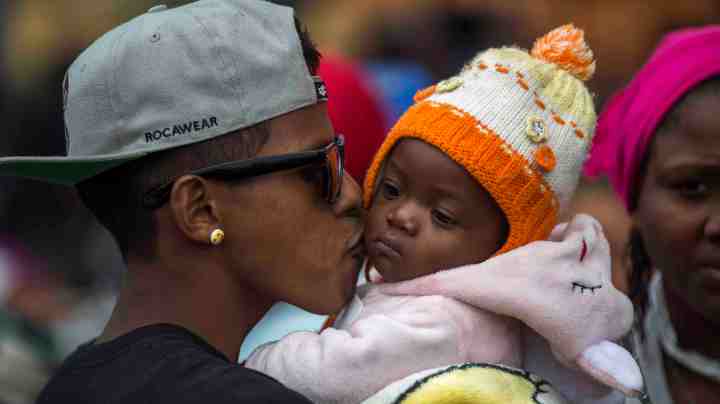This Video Is a Reminder That Our Immigration System Is Even More Unjust to Black Immigrants

Members of a caravan of Central Americans who spent weeks traveling across Mexico walk from Mexico to the U.S. side of the border to ask authorities for asylum. Photo by David McNew/Getty Images
The United States government has a history of treating immigrants in inhumane ways. Just in the last few months, the Trump Administration separated children from their parents at the border. (Even though the administration said it ended the practice, it has yet to reunite the hundreds of families it viciously tore apart.) Darlin Suazo, a Honduran woman, was one of many split from her child. But for her, the abuse and injustices were amplified.
With the help of the Refugee and Immigrant Center for Education and Legal Services (RAICES), Suazo could finally hold her daughter in her arms after two months of separation. As an Afro-Honduran woman, immigration officials subjected Suazo to an added layer of mistreatment because of the color of her skin. In a recent video, Suazo tells her story, explaining how as she went through this painful experience of being away from her daughter while also dealing with the harsh conditions, such as trying to bear the freezing temperatures inside a “hielera,” she also faced discrimination. “[The ‘perrera’] is the same procedure as the hielera, the very cold room,” she said. “It is such a cold room that I struggled picking myself up. The cold made it difficult to speak. Similar to the other cold room, we were sleeping, the separated mothers, together, one on top of each other. The attention from the officers was horrible. It was horrible because some officers did not refer to me by my name. Morena, morena, morena, morena, they only called me morena. And this affected me more. It affected me more because I was discriminated against, it was racism.”
Immigrants are generally portrayed as brown Latinos. This narrative erases the experiences of Afro-Latino immigrants as well as the overall Black immigrant population that has increased fivefold since 1980. This is a disservice to this community because Black immigrants are much more likely than those from other countries to be deported because of a criminal conviction. Black immigrants are therefore simultaneously affected by the country’s criminal justice system and immigration policies.
“Racial bias present in the criminal justice system plays itself out in the immigration context,” César Cuahtémoc García Hernández, a University of Denver law professor who studies how policing and immigration law intersect, told The Atlantic. New York University law professor Alina Das added, “There are so many entry points [to deportation.] When you are a person of color who is also an immigrant, you face a double punishment.”